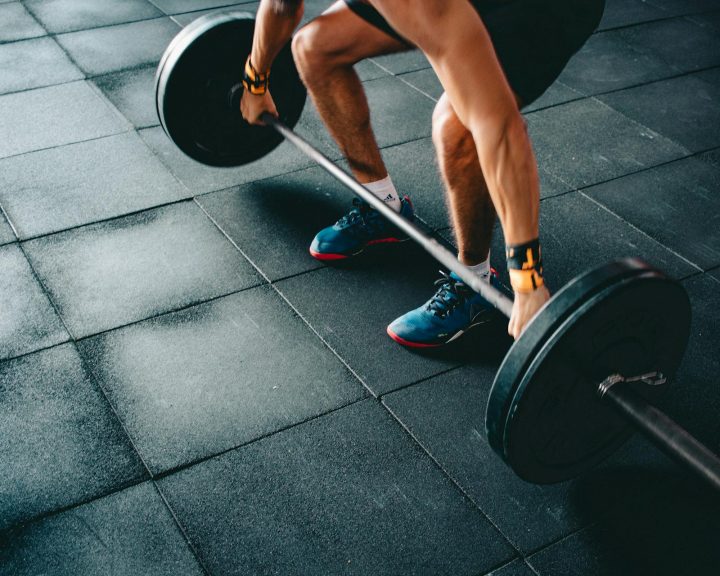In-season training offers unique challenges with program design for athletes. Frequently people do either extreme, too much or too little for the athlete’s strength and conditioning. Below are some thoughts to assist with in-season training:
1. During the season, the focus is on the sport
2. Strength and power are skills, they need to be trained year-round
3. Speed and agility take on added importance during the season
4. The season places unique demands on the athlete
During the season, the focus is on the sport:
This is a distinction that seems subtle, after all – aren’t we always concerned about the sport? The answer is yes and no. Training should always be geared towards improving the athlete’s performance in their sport. However, during the rest of the year there is more focus on training. Once we get in season, the focus is on practice, sports skills, strategy, and competition. This means that strength and conditioning is often going to take a backseat in terms of priorities. Program design should keep the change in priorities in mind. This means focusing on what’s important.
Strength and power are skills, they need to be trained year-round:
In terms of what’s important, strength and power are critical qualities for most athletes. Most athletes spend the bulk of the year developing these qualities and then it’s easy to lost them during the season when the athlete needs them most. Classically, strength and conditioning professionals are trained to go into maintenance of strength and power during the season. You see recommendations like, 1-3 sets of 1-3 reps at 90%. Problem is this isn’t enough for even maintenance.
Another issue with maintaining during the season is that the seasons are getting longer. It’s not unusual to see professional or elite athletes spending more than six months out of the year in season. So if you are maintaining over six plus months, eventually the athlete is going to regress.
This requires some careful planning and balancing. Obviously if we have a lot of travel and multiple competitions in a week, this would be a bad week to go heavier.
The season is a good time to use some advanced methods to make better use of the athlete’s time. For example, complex training, contrast training, bands, chains, eccentric lifts, pause lifts, that sort of thing.
Here’s an example of something that would be too stressful during the season, but may be appropriate earlier in the year:
|
Monday |
Tuesday |
Wednesday |
Thursday |
Friday |
|
Power clean, 3×2-4×70-80% Clean pulls, 3×3-6×70-80% Back squats, 5×2-6×80-90% Split squats, 3×4-8 each leg Romanian deadlifts, 3×4-8 Reverse hyyperextensions, 3×8-12 |
Push jerk, 3×2-4×70-80% Bench press, 5×2-6×80-90% Floor press, 3×4-8 Seated rows, bench press grip, 3×4-8 Military press, 3×4-8 |
Off |
Power snatch, 3×2-4×70-8% Deadlifts, 5×1-4×80-90% Front squats, 3×4-8×70-80% Back raises, 3×8-12 Glute ham raises, 3×8-12 |
Push jerk, 3×2-4×70-8% Close grip bench press, 5×2-6 Dips, 3×8-12 Bent over rows, 3×4-8 Military press, 3×4-8 |
The workout above is great for increasing strength and power in the weight room. It’s also too much during the season. Below is an example of how to use some advanced tools (in this example complex training) to reduce the workload to enhance strength and power.
|
Monday |
Tuesday |
Wednesday |
Thursday |
Friday |
|
Snatch grip deadlift + Power snatch, 3×3+2×70-80% Back squat + Box jumps, 3×4-6×80-90%+5 jumps Romanian deadlifts, 3×8-12 Bench press _ MB throws, 3×4-6×80-90% + 5 throws Pull-ups, 3×8-12 |
Romanian deadlift + Power clean, 3×4-6 + 3-4×70-80% Front squat + Split jerk, 3×3-5+2-3×70-80% Bent-over rows + MB throws, 3×4-6 + 5 throws Incline press, 3×8-12 |
Speed and agility take on added importance during the season:
In-season, speed and agility need to be sport specific. They should probably be this way year round, but I understand that not everyone sees things this way. Speed and agility are still important in-season, in fact they may be more so because this is where strength and conditioning links to the sport. The challenge is that there isn’t as much time or as much ability to recover. Because there’s not enough time and more demands on the athlete, agility drills can be designed so that they are sport-specific, develop agility, and enhance sport-specific speed.
For example, for a basketball player we might have them jump up and get a rebound, take the ball, dribble it down the court, and make the lay-up. To add difficulty, we might require different ball control moves as the athlete moves around defenders.
The season places unique demands on the athlete:
Athletes are competing in the season. This is a really important thing to keep in mind with program design because it is the most important thing to the athlete and ultimately it is why the athlete is training. Athletes must travel back and forth to competition, this limits training time and impacts their ability to recover. Athletes are also practicing as much as they can. If the athlete is in school, they are still studying and attending classes and dealing with those stresses. Then there is the athlete’s life outside sports which always impacts things.


